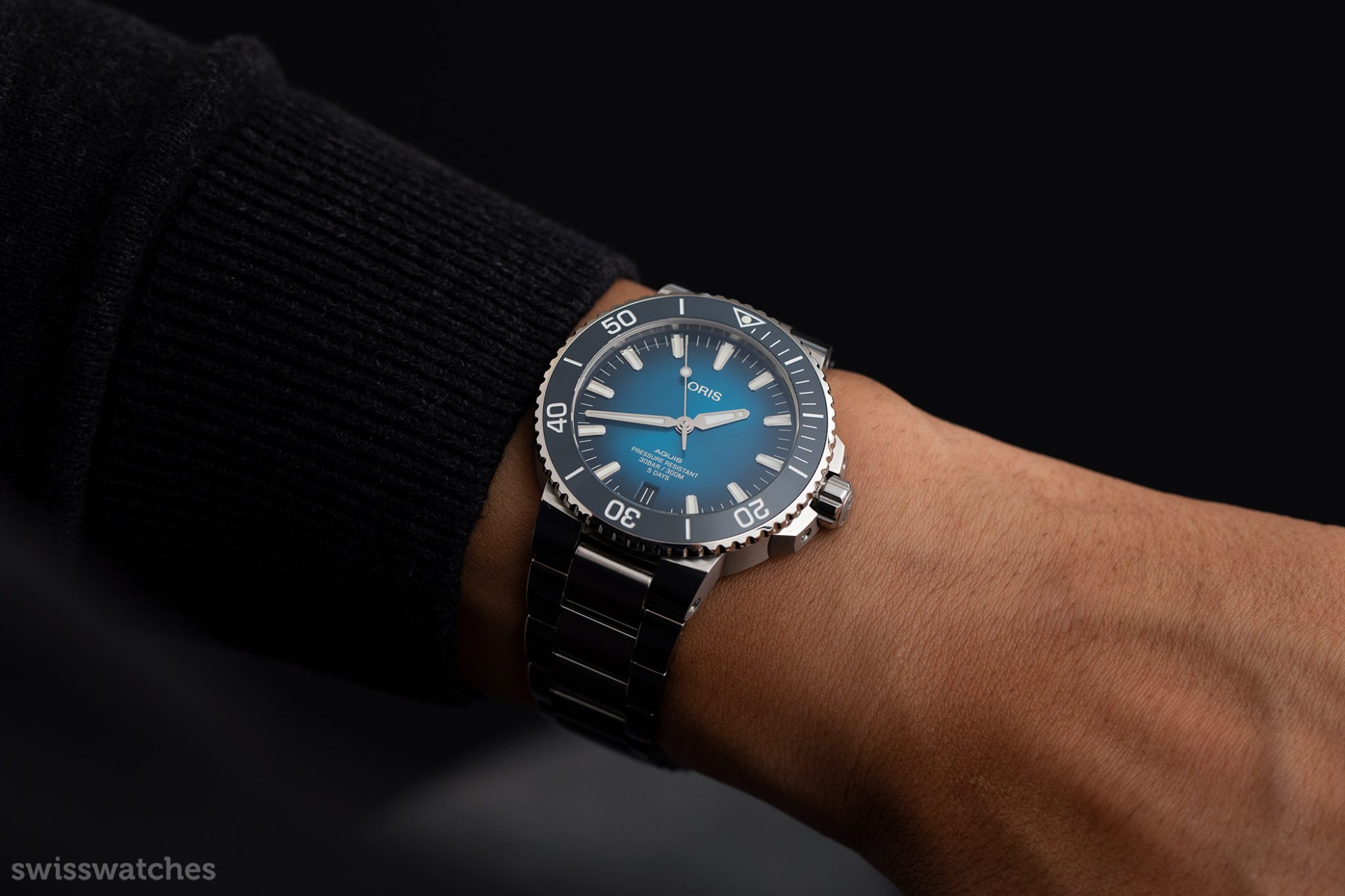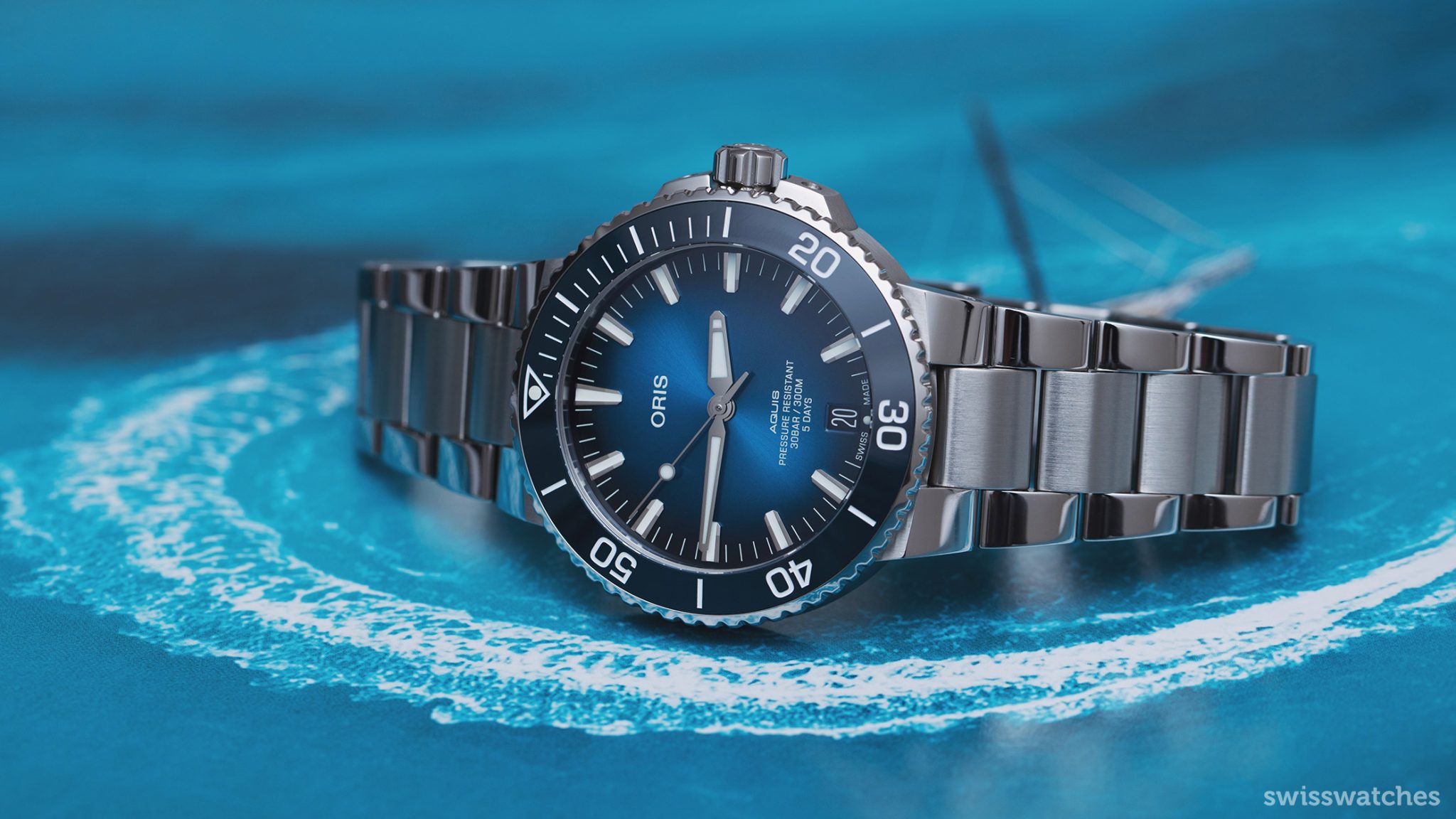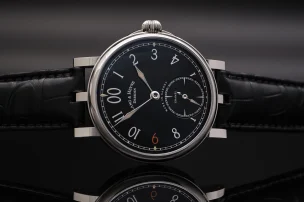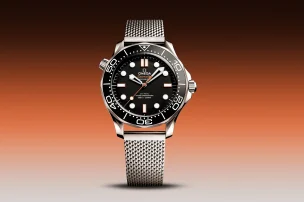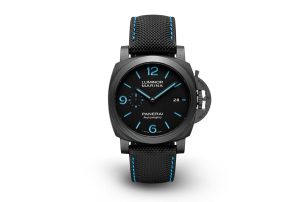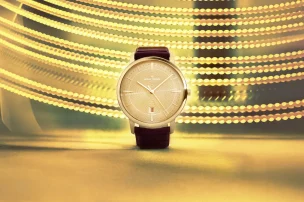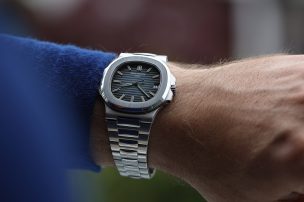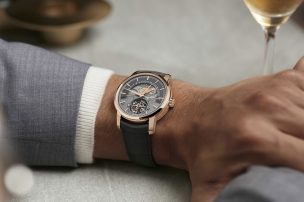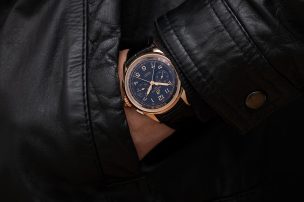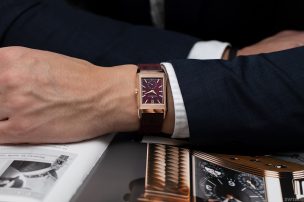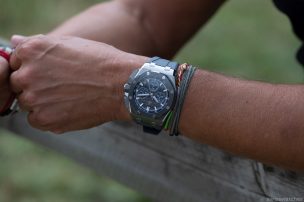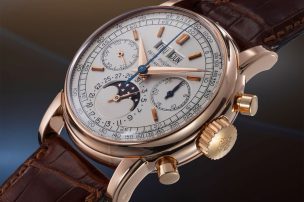
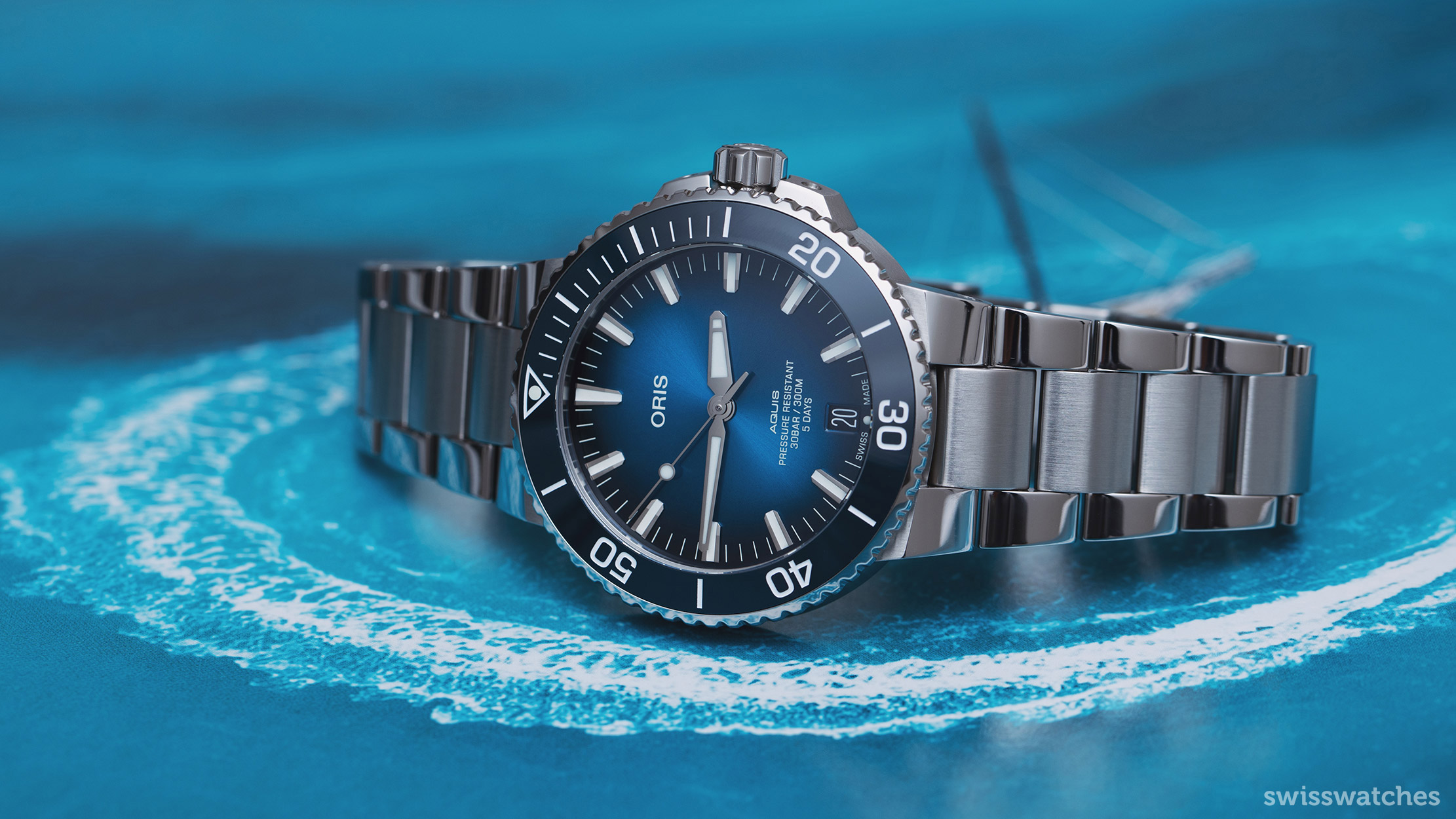
First Look – Oris Aquis Date Calibre 400
Following the launch of its new Calibre 400 in-house movement in mid-October, Oris is now launching its first watch to feature the calibre. The Hölstein-based watchmakers have chosen its Aquis Date model as the first lucky recipient. In this article, we explain exactly not only why they chose a diver’s watch, but also how the watch will hold its own against the competition in this price segment, as we have already been fortunate enough to spend some time taking a closer look at the new timepiece during the past few weeks.
When a watch brand in the entry-level price segment launches an in-house calibre – i.e. it no longer uses a supplied movement from external providers for a specific model, but draws on its own expertise and resources – it tends to receive a lot of attention. This is exactly what we saw within the watch community, as it reacted to the Oris Calibre 400, upon its launch back on October 15.
People seemed particularly keen to predict which price segment Oris was likely to fall into with the new calibre, and also, to guess which watch would the calibre first be featured? Now, at last, the secret is out. To answer the latter question, it is the icon of modern diving watches – at least for die-hard Oris fans – the aptly named and ever-popular Aquis. To answer the former question: in keeping with the company motto of providing high quality at a reasonable price. The new Aquis Date Calibre 400 is even available for less than 3,000 Euros, when purchased with the rubber strap. However, it is well worth noting that this is by no means the first time that Oris has produced a movement in-house.
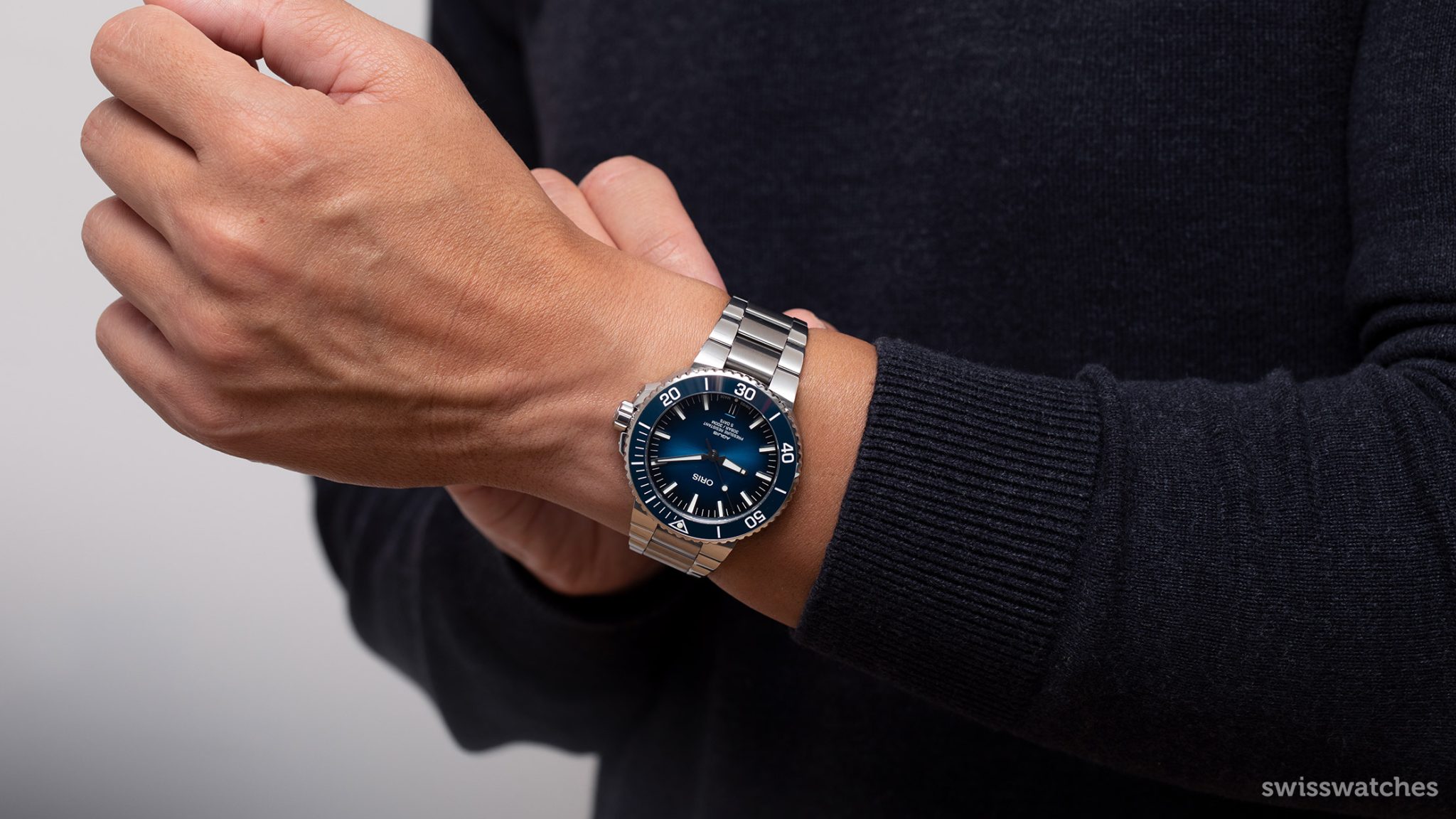
Oris Aquis Date Calibre 400
Back to the manufacture
By 1981, the horology house, founded back in 1904 in Hölstein near Basel, had developed around 280 of its own calibres. In the 1950s, this had included various automatic movements using the calibres 601 and 605. Only during the quartz crisis did the brand temporarily succumb to pressure and switch to quartz. It was also at this time, in 1970, that Oris relinquished its independence and became a part of the “Allgemeine Schweizerische Uhrenindustrie AG” (ASUAG) – later to become the Swatch Group.

Oris headquarter in Hölstein, near Basel
But after the management buyout and a fresh start in 1982, Oris bid farewell to the cheap quartz factories from afar, and turned to external suppliers such as ETA and later Sellita. At this point in time, manufacture calibres were inconceivable, however this was more a strategic decision than the result of a lack of assets. Due to the cheaper quartz watches on the market, there was a huge amount of pressure regarding lower pricing, and this, inevitably, also left its mark on Oris.
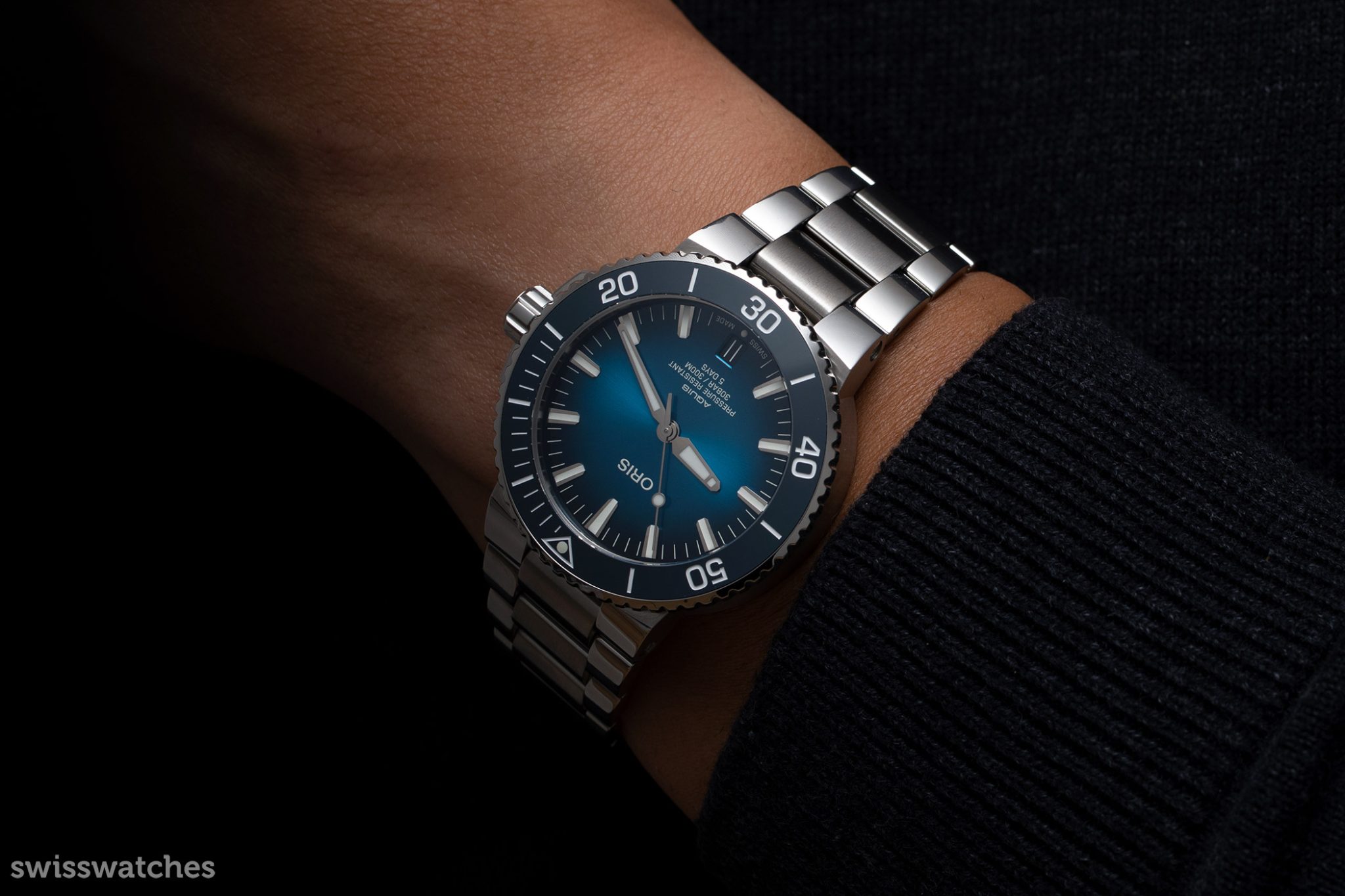
It wasn’t until 2014 that Oris ventured back into in-house movements, launching the 110 Years Limited Edition model with the Calibre 110 to celebrate the brands 110th anniversary. In the years that followed, new calibres were added almost every year, from Calibre 111 to 115 – all of which had a power reserve of an incredible 10 days (240 hours) – albeit hand-wound.
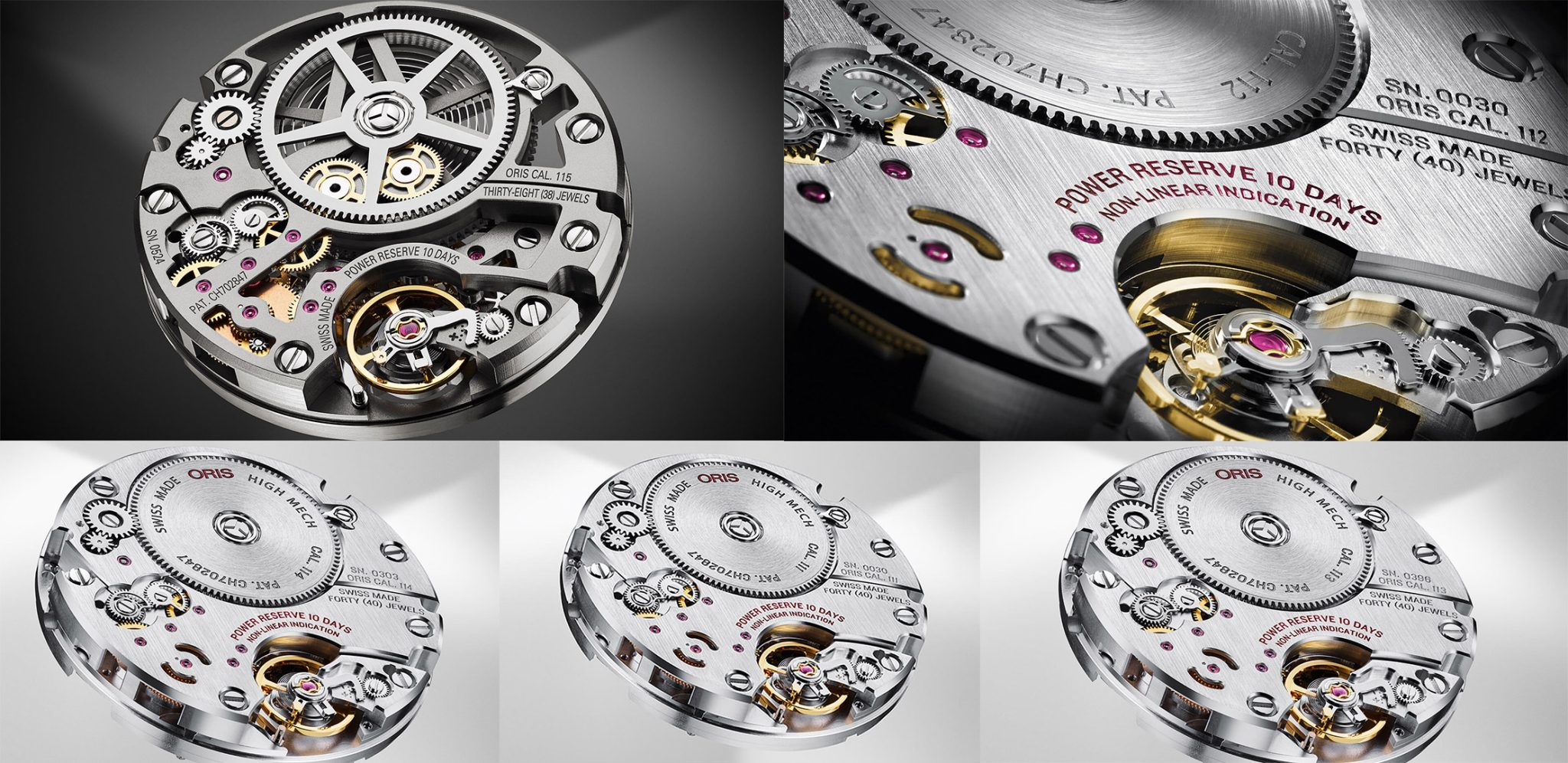
Oris in-house movements Calibre 110 to 115
In 2015, the year in which the second calibre 111 was launched after a 35-year hiatus, Oris was already working on the comeback of a new, automatic movement. It was the Calibre 400, which is now freely ticking in none other than the new Oris Aquis Date Calibre 400.
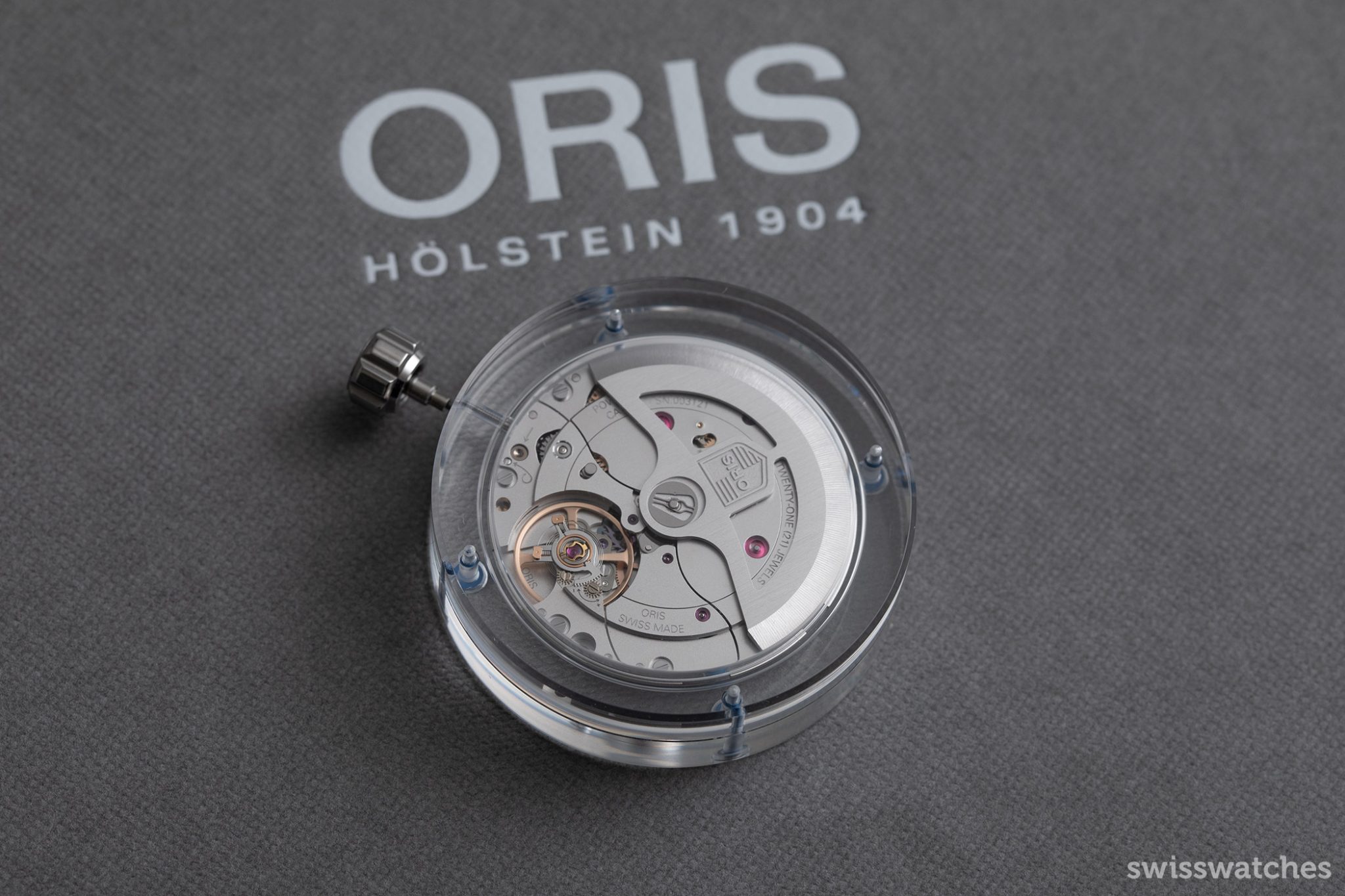
Oris Calibre 400 with 5 days power reserve
Oris Aquis Date Calibre 400 – Down to the Details
So, why did Oris choose an Aquis as its first model to feature the Calibre 400? Many might have expected the Big Crown – after all, it was Oris’ first wristwatch back in 1938. Ultimately, however, the choice of an Aquis watch does make sense; no other line is as popular with Oris around the world as its divers’ watch. Furthermore, perhaps it’s also because the Aquis is the most emblematic watch in Oris’ portfolio seen in the past 55 years, and Oris is now looking to usher in a new era: durability and reliability – at a remarkably attractive price (with the core models of the Aquis line starting at 1,750 euros).
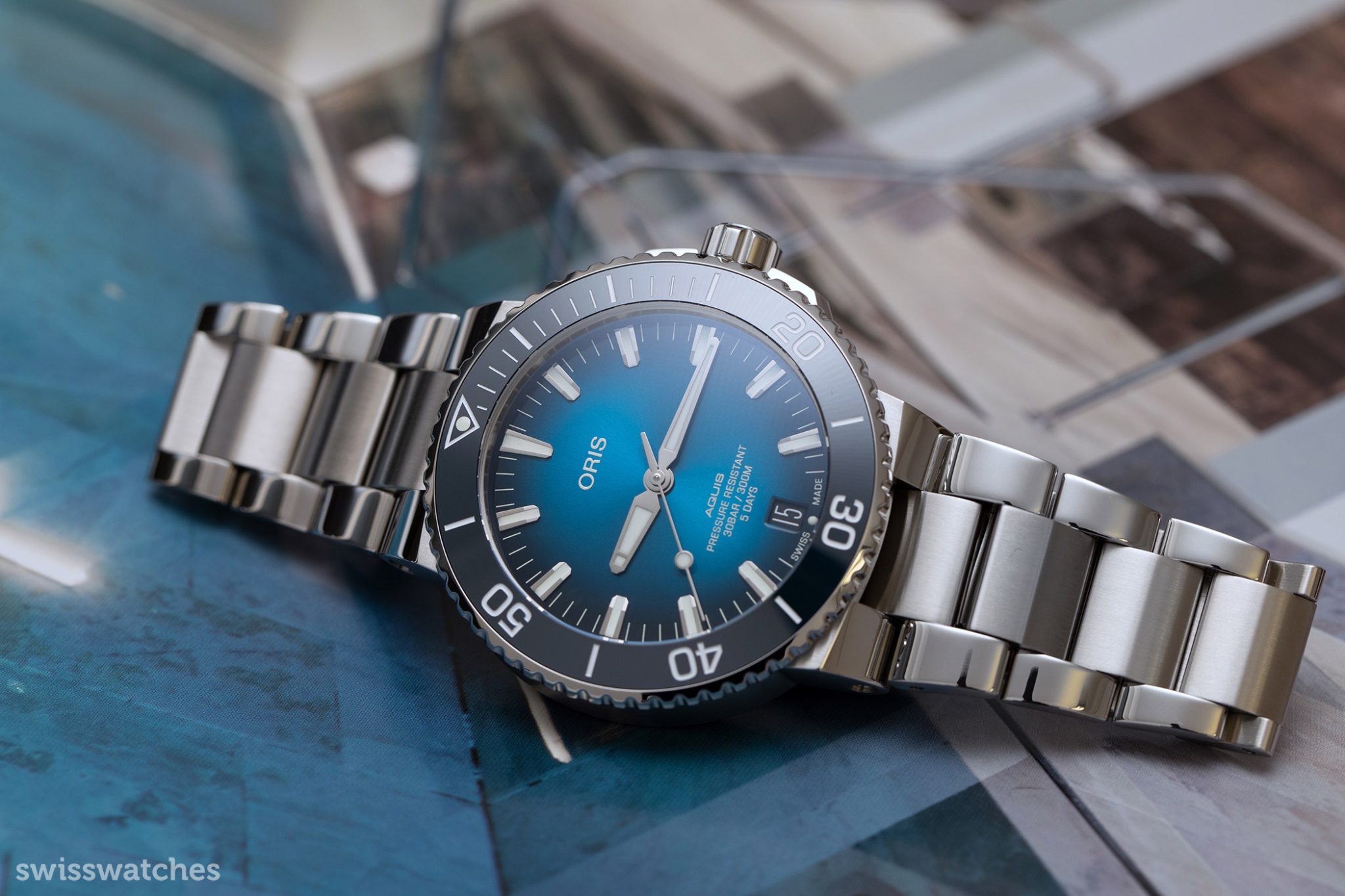
Oris Aquis Date Calibre 400
With a multi-piece case and a screw-down crown, the Aquis Date Calibre 400 is water-resistant to 300 metres. Interestingly, however, Oris refers to the dial as “pressure resistant”, as opposed to “water resistant”, as the depth of water does not always correspond to the pressure.
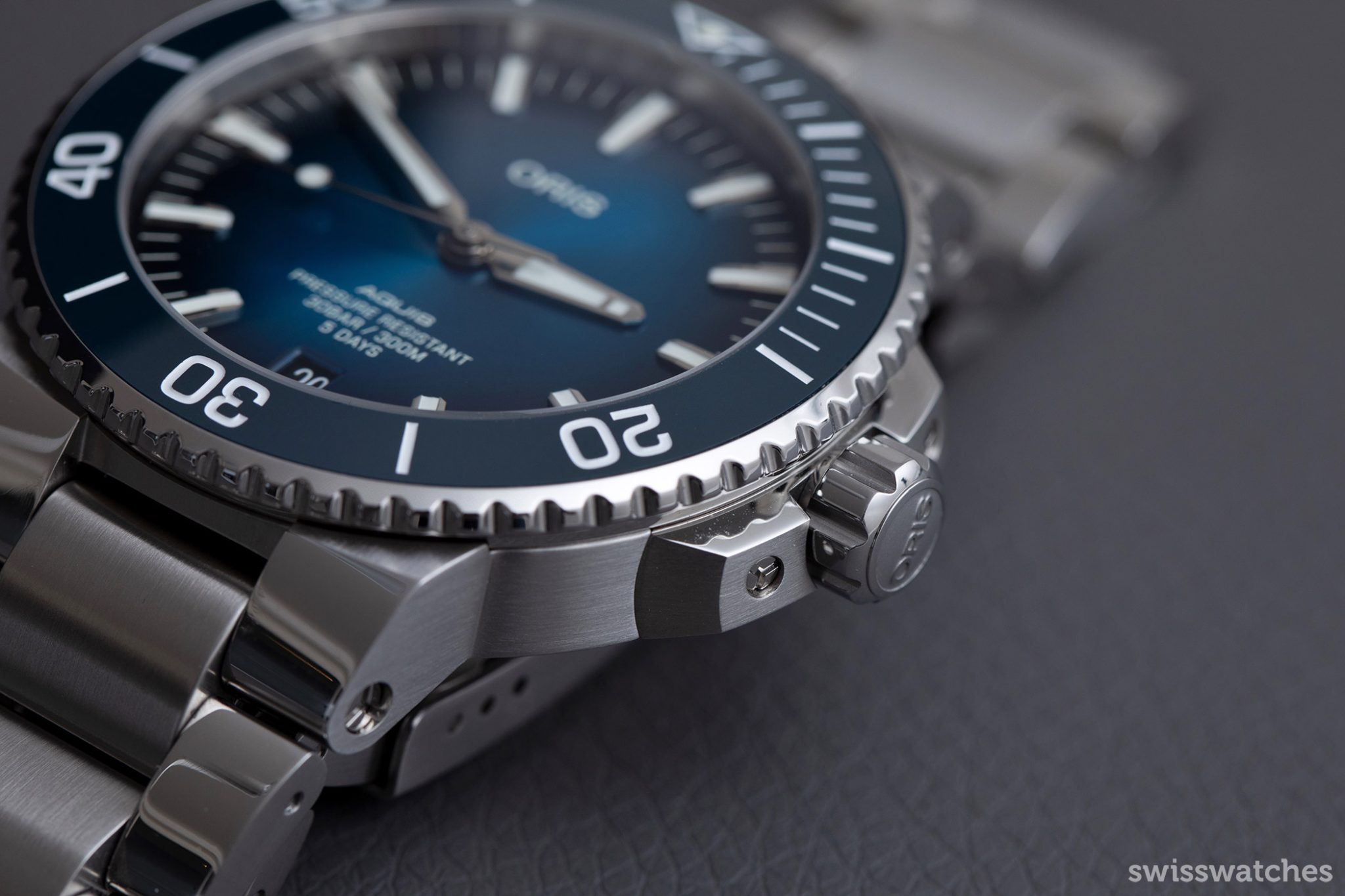
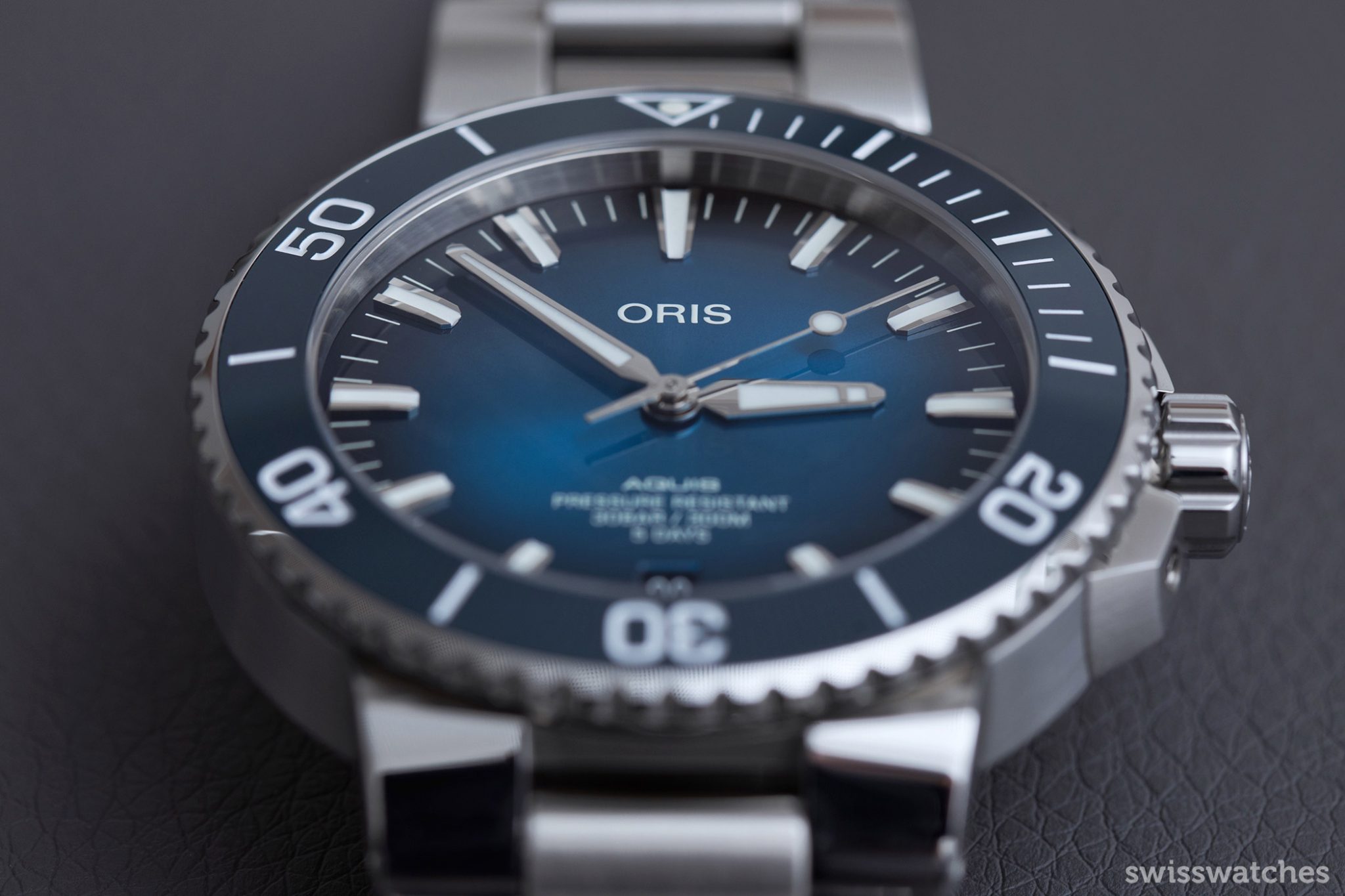
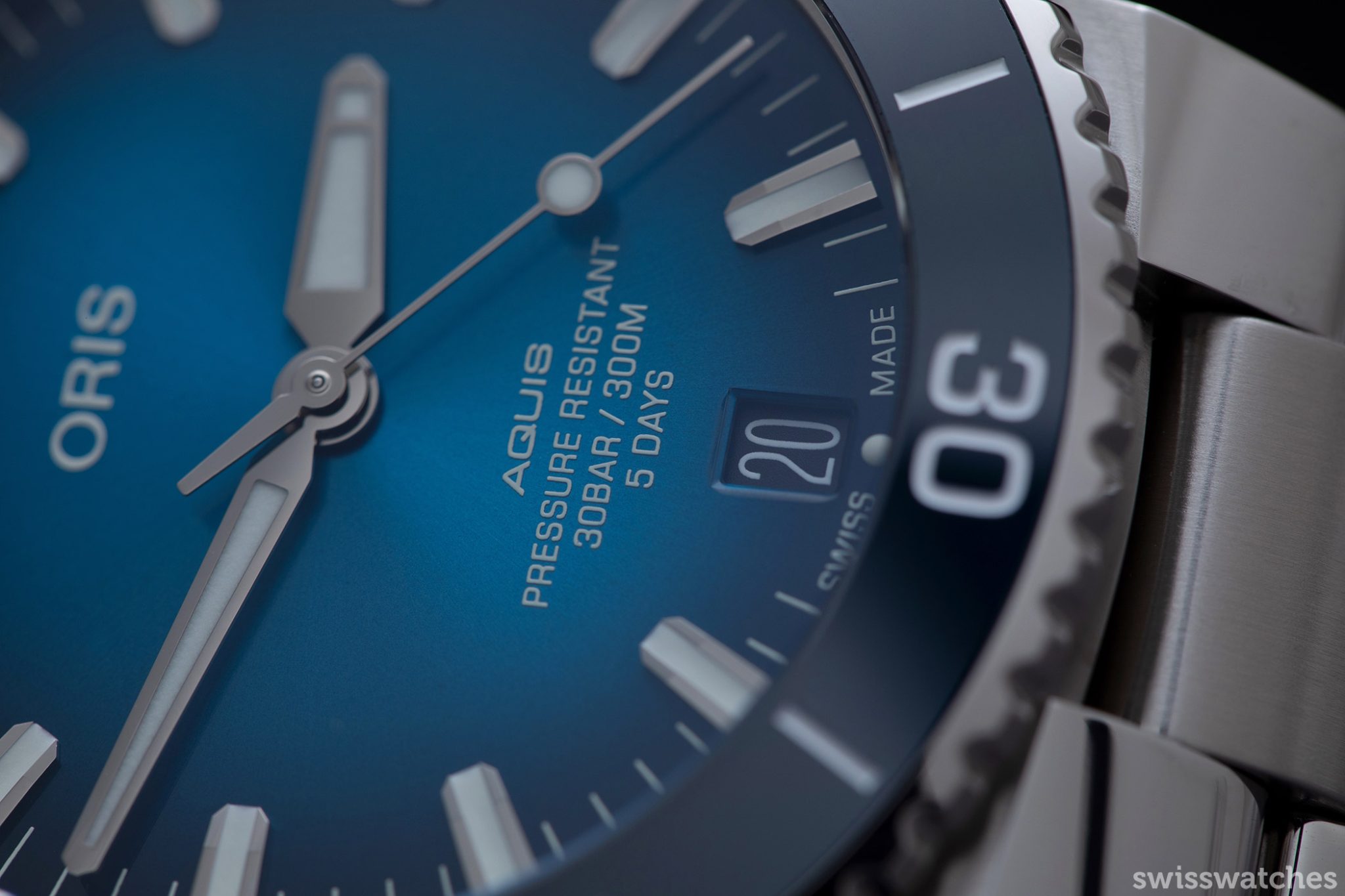
Let’s quickly round up the core Aquis line: its ceramic bezel is virtually scratch-resistant, and the refined Sellita movements (SW 200) in the core collection, with the typical red rotor, are considered to be reliable in the industry. Furthermore, despite its robust features, it manages to achieve a balancing act between not only being a practical toolwatch, but also a timepiece that is suitable for everyday use. The Aquis’ subtle 2017 revamp certainly contributed to this: slimmer lugs, more distinctive hands and hour-markers, plus a redesigned crown and crown guard.
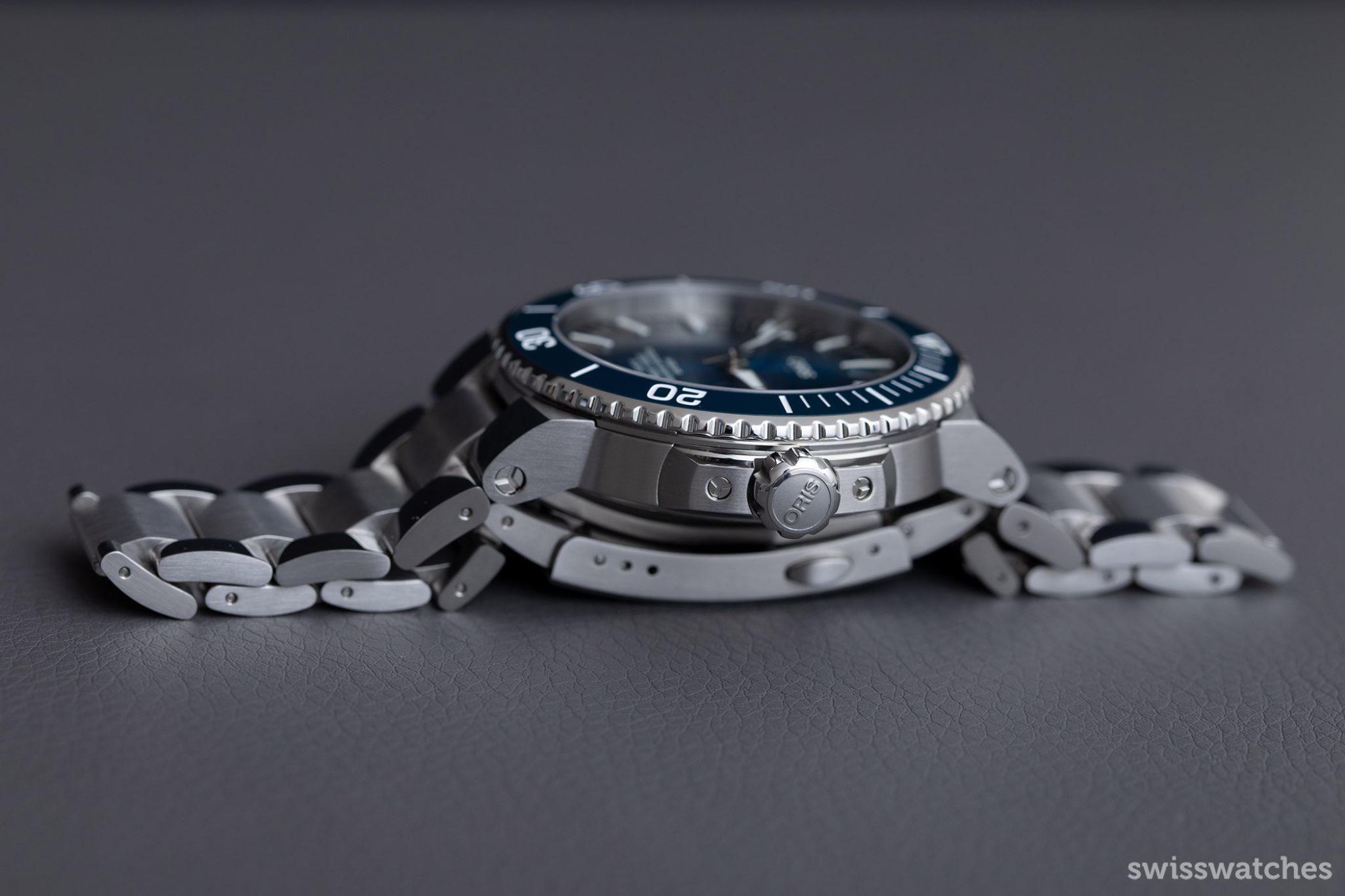
With the calibre upgrade, the Aquis Date Calibre 400 has now had another subtle makeover. Even though the model is available in various case sizes in Oris’s core line, the new Aquis Date Calibre 400 is housed in a 43.5 mm case. On the dial lies the inscription “5 Days”. This stands for the 5-day power reserve that the new model offers its wearer, even if he or she does not feel like wearing it every day. The date display at 6 o’clock is a touch larger, and now has a black background instead of the usual white.
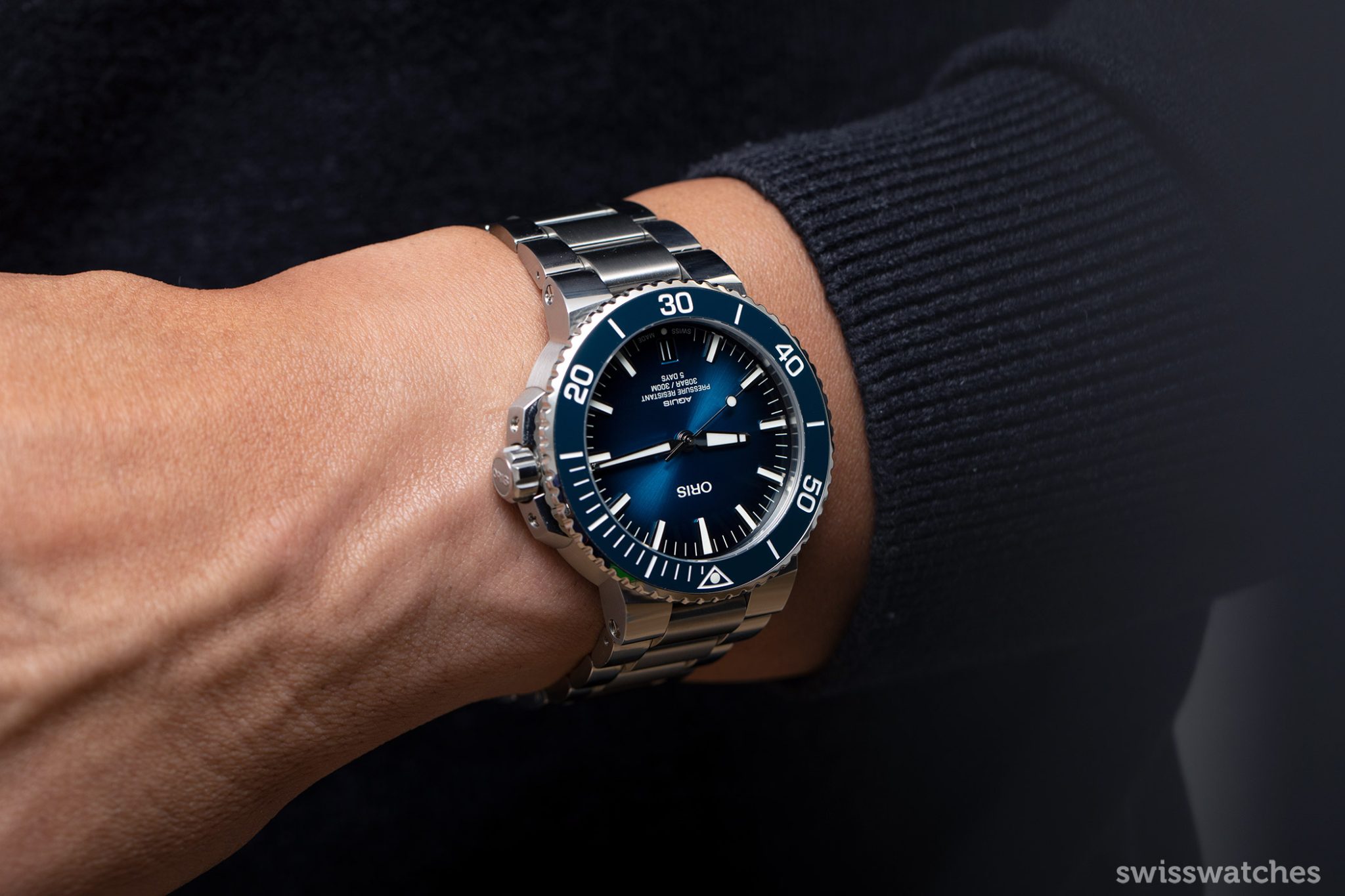
43.5 mm case diameter
A larger sapphire crystal caseback has also been included, giving the new movement a more striking appearance. For comfort, it is equipped with the latest patented Quick Strap Change System, which allows the bracelet to be changed simply by lifting a tab, without the need for tools. The new Aquis Date Calibre 400 is available with either a steel bracelet (3,000 euros) or a black rubber strap (2,900 euros). Both versions will be available from November.
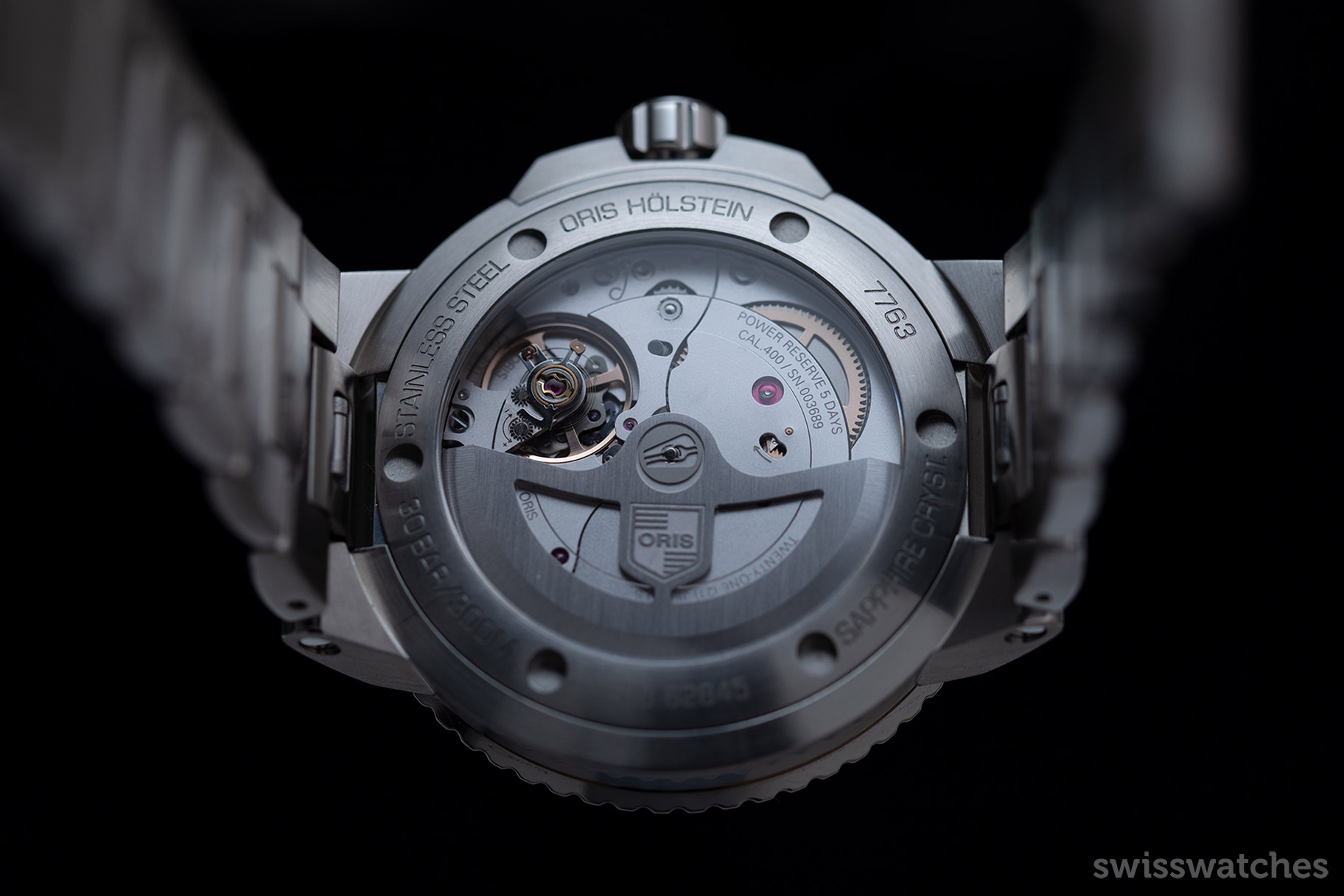
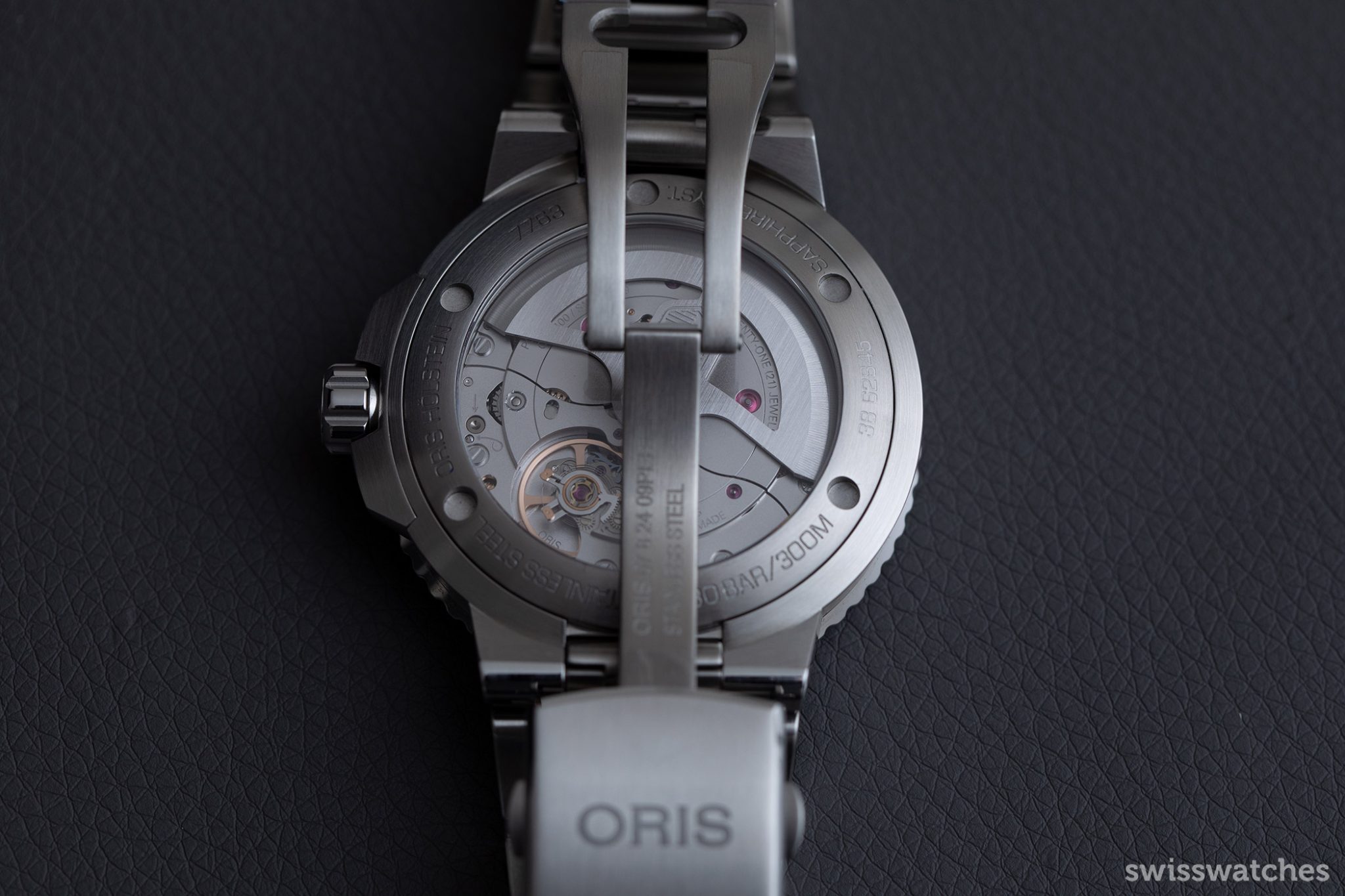
The High Performance Calibre 400
Five years ago, a team led by Beat Fischli, COO and Chief Developer at Oris, began designing the Calibre 400, a high-performance calibre with a 5-day (120-hour) power reserve and a 10-year guarantee. The service intervals are also set, or at least recommended, every 10 years. This remarkable feat is possible thanks to the inclusion of a double mainspring barrel, a more stable rotor system and over 30 anti-magnetic components in the movement.
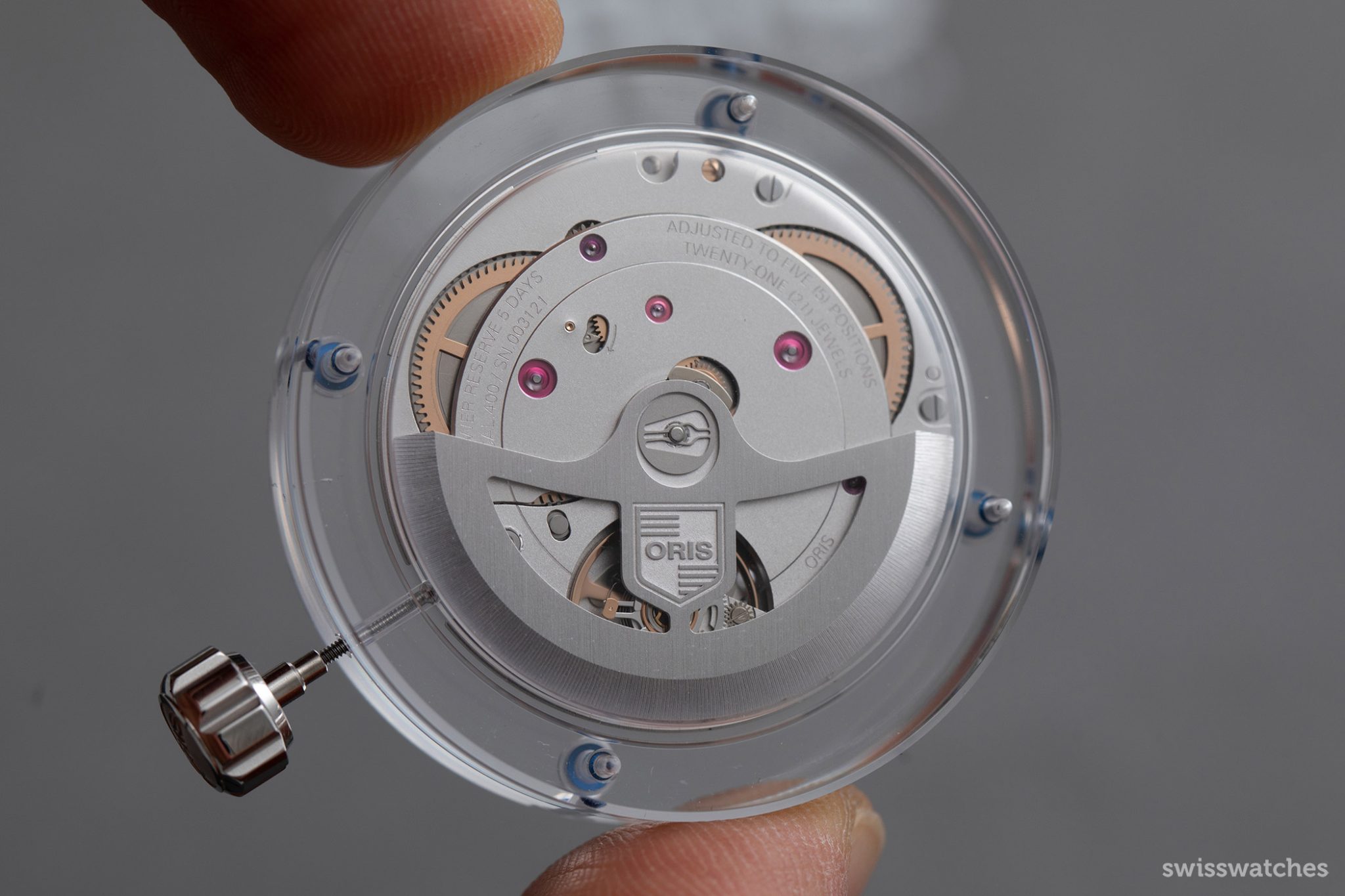
Self-winding Calibre 400
Normally, the oscillating weight or rotor is mounted on a ball bearing and winds on both sides. As automatic watches often have problems with the ball bearing and the reversing wheels (for two-sided winding), Oris engineers replaced it with a smooth-running slide bearing, in which a steel axis is guided by a lubricated sleeve. This creates less friction, thus less wear and extends the service life. The one-sided system protects the reversing wheels.
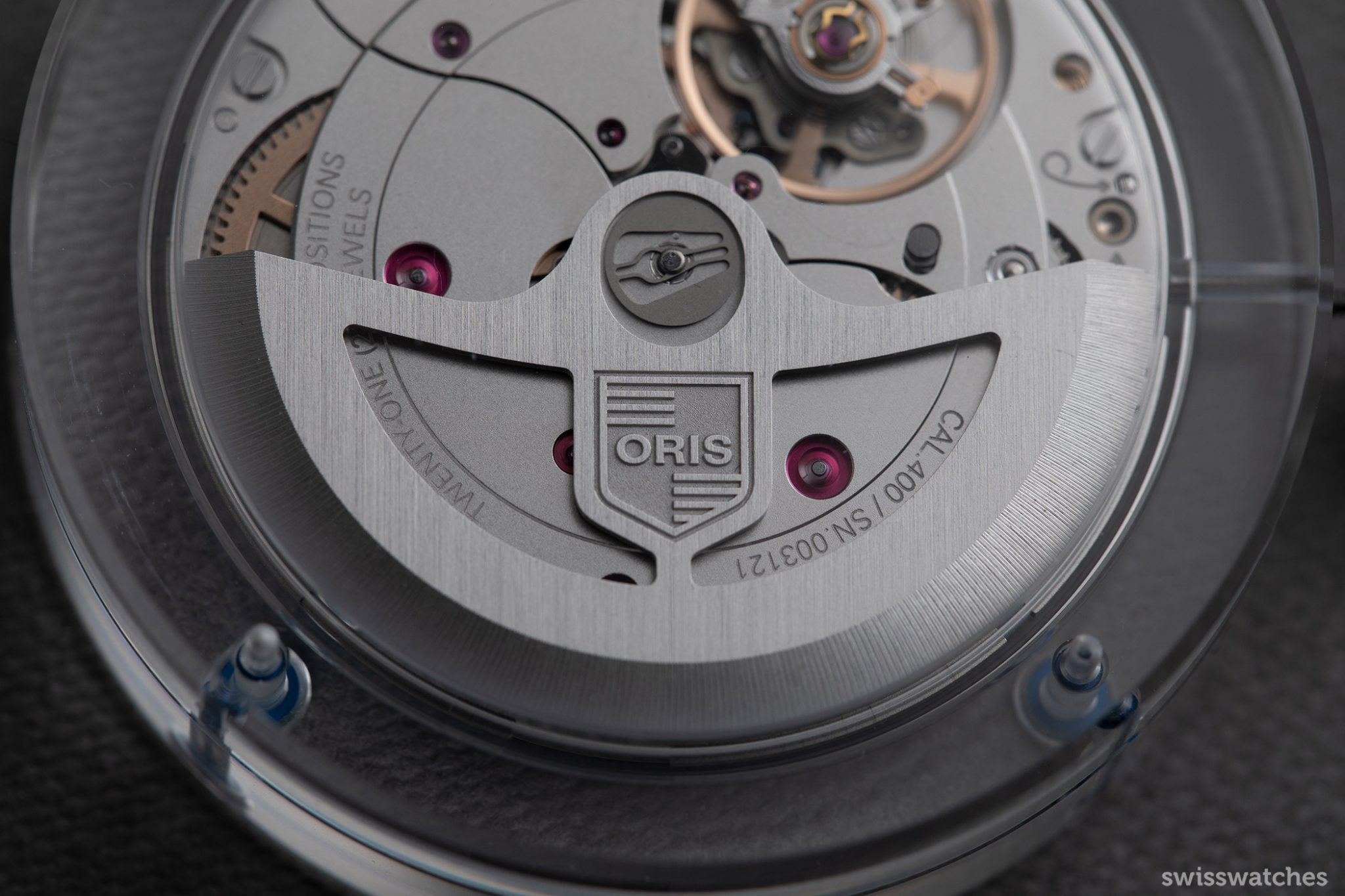
Calibre 400 has an accuracy of +5/-3 seconds per day, which actually tops the strict COSC standard. The over 30 non-ferrous and non-magnetic components play a major role in this. Furthermore, the escapement wheel and lever are made of silicon. In tests carried out in the well-known Laboratoire Dubois, Calibre 400 deviated by less than 10 seconds per day after one day of continuous use at 2,250 gauss. By way of illustration, to be considered anti-magnetic according to the latest version of ISO 764, the rate of a watch may deviate by up to 30 seconds per day after exposure to just 200 gauss.
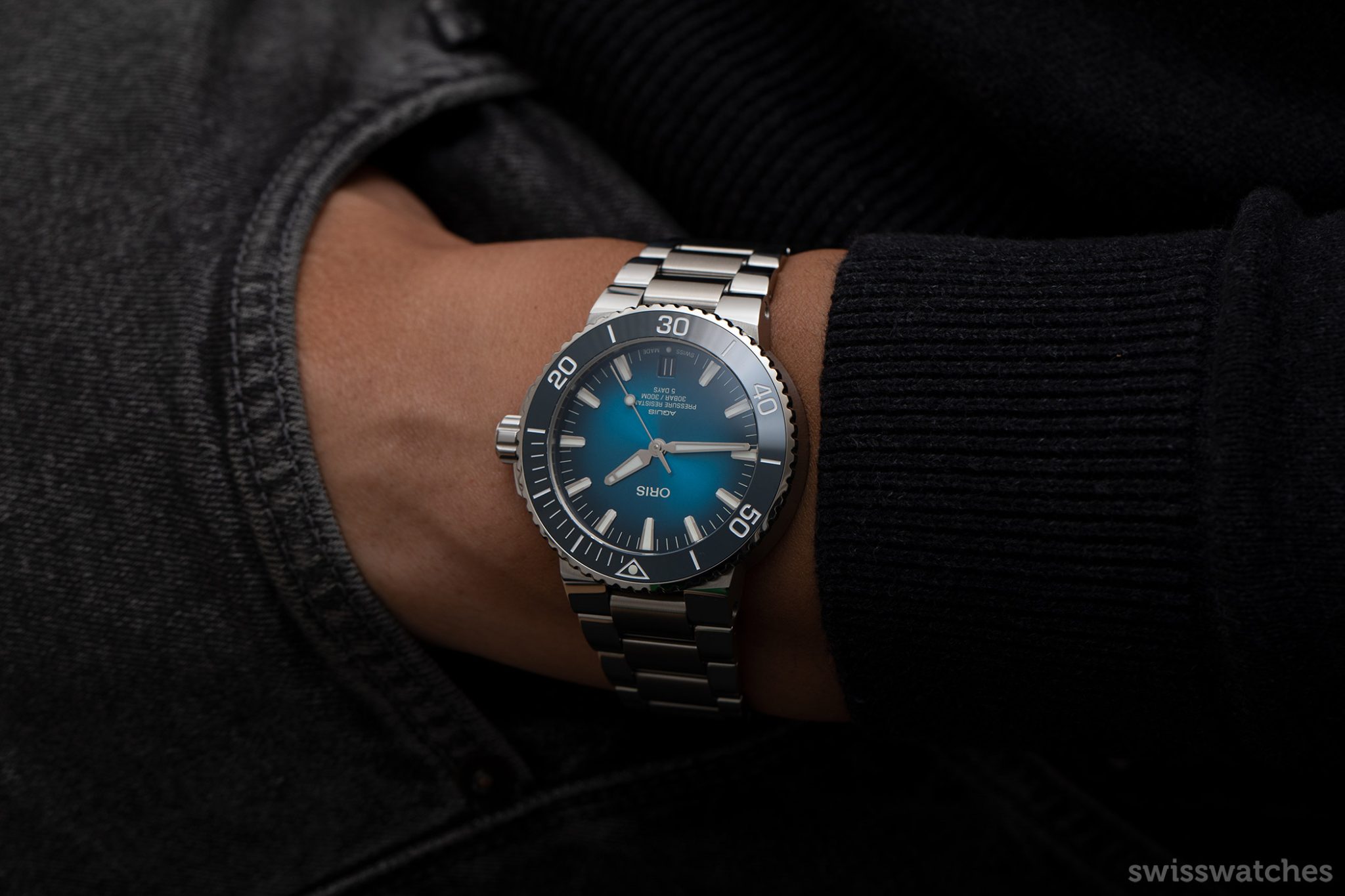
The current Aquis Date models with Sellita movements run with a power reserve of 38 hours. Thanks to a double mainspring barrel with thinner springs made of Bioflex, the Calibre 400 achieves a power reserve of 120 hours (5 days). One advantage is that the movement gains 85 percent of its energy from the mainspring, instead of the usual 70 percent. Last but not least, the movement offers a balance wheel stop for setting the time to the exact second.
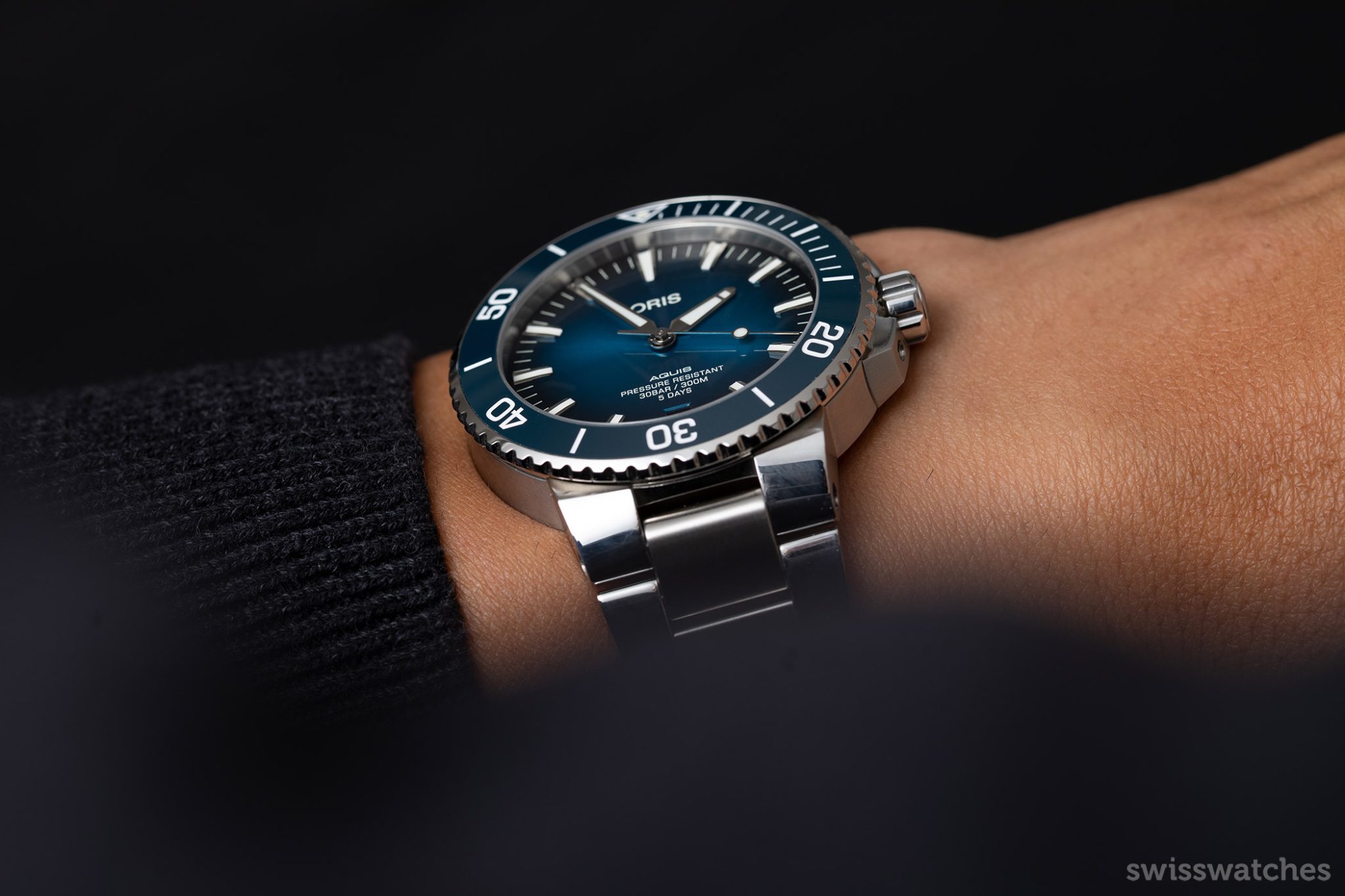
A Competitive Manufacture Calibre
If we set performance and quality against price, it is clear that there is little to criticize –the new Oris Aquis Date Calibre 400 is not going to spark a debate about pricing policy. Nevertheless, it’s worth looking at where Oris stands in the industry with its new calibre. Calibre 400 can certainly compete with its competitors. For example, one can take Baume & Mercier’s Baumatic calibre BM12-1975A. It also has 120 hours of power reserve at a frequency of 28,800 A/h (4 Hz). The long mainspring is made of Elinflex and a high-performance ‘Powerscape’ escapement contributes around 30 percent to the improved power autonomy, which also meets COSC standards. Again, the lever and escapement wheel are also made of silicon. The Clifton Baumatic, which houses the calibre, is just under 3,000 euros.
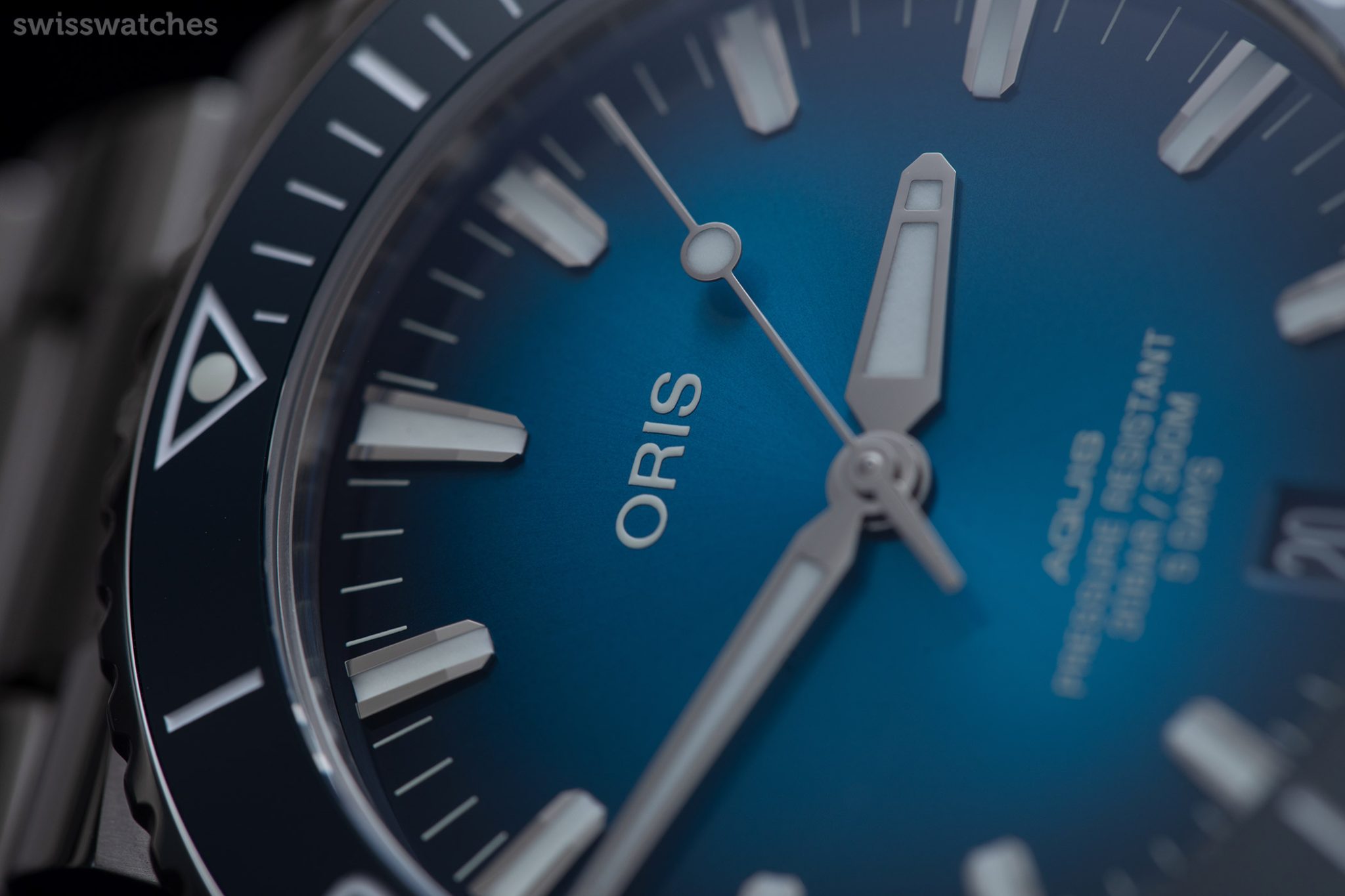
Oris will be exerting a healthy dose of pressure onto its competitors with its new Calibre 400. For example, TUDOR’s in-house automatic calibres may be impeccable, but in terms of performance and price, they actually fall slightly short of the Calibre 400. A power reserve of 70 hours is above average, but new standards are gradually being set. Even the young watch company NORQAIN, which obtains its latest manufacture movements from TUDOR’s subsidiary Kenissi, is finding it difficult to keep up with the value for money policy of Oris’ new Aquis Date Calibre 400 – not to mention the fact that Oris gives a 10-year guarantee, with a 10-year service recommendation, and is not part of a large group but an independent watch company.

The “New Standard”?
Oris’ goal is certainly not to become completely independent when creating movements – at least for now. Rather, it is a question of paying tribute to the company’s history. Sellita movements will probably continue to maintain Oris’ attractive entry level prices. However, CEO Rolf Studer’s talk of “The new standard” suggests that the new Calibre 400 will be seen more and more – and could also be used as a base for watches with other functions. In recent years, Oris has managed to break out of its cozy cocoon, and has stirred up the watchmaking world. Now, its competition will have to keep an eye on them.
